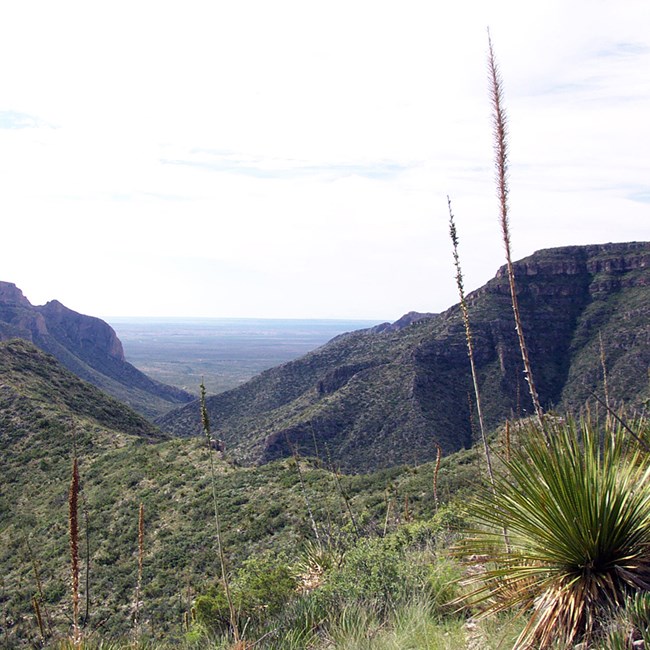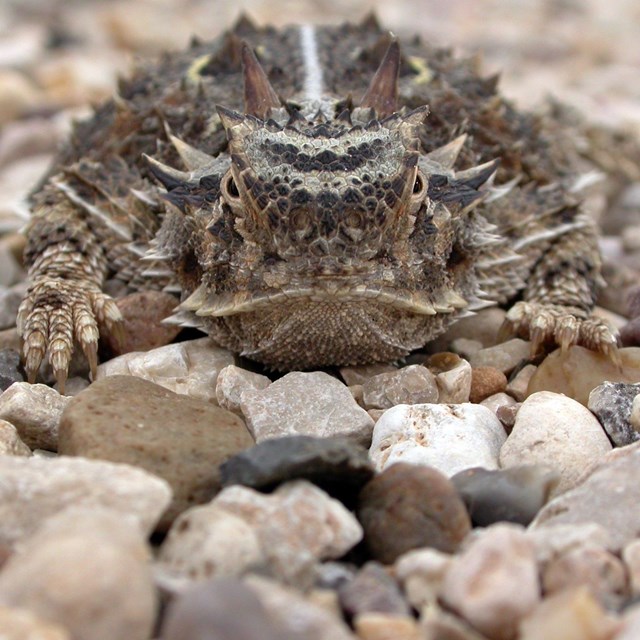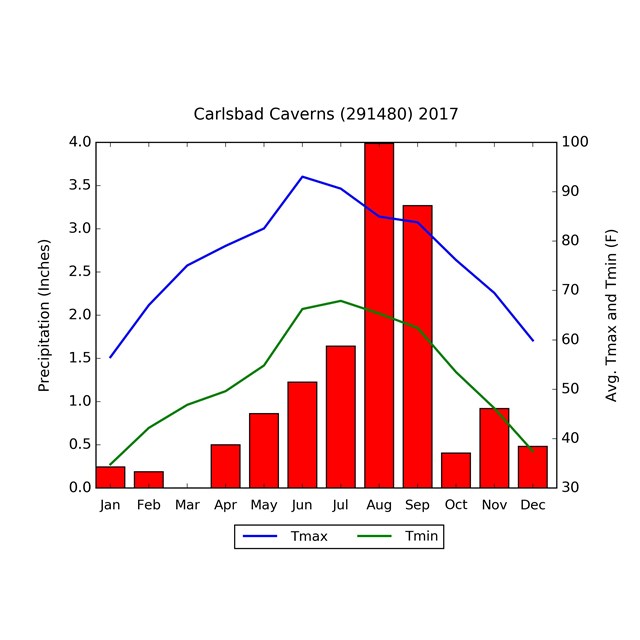
NPS Photo
Carlsbad Caverns National Park is located in the Guadalupe Mountains in New Mexico and preserves a portion of the Capitan Reef—one of the best-preserved, exposed Permian-age fossil reefs in the world. Water, geologic forces, climactic changes, and vast spans of time have produced and changed the fossil reef and its spectacular caves, a process that continues to the present day. Elevation in the park ranges from 1,096 meters (3,595 feet) in the desert lowlands to 1,987 meters (6,520 feet) atop the Capitan Reef. Annual precipitation is approximately 37 centimeters (14.5 inches).
Although the park is famous for its caves, it also protects desert and semi-desert grasslands, desert scrub and woodlands, montane chaparral, and montane woodlands. Freshwater riparian areas are the most threatened resource in the Chihuahuan Desert. Rattlesnake Springs at the park is a rare desert wooded riparian area known for the diversity of plant and animal life found there, including migratory birds.
Carlsbad Caverns National Park is home to 1,029 plant species from 97 families, five fish species, 70 different reptile and amphibian species, 68 mammal species (including 17 bat species) and 376 bird species. Between 300,000 and 400,000 Brazilian free-tailed bats call Carlsbad Caverns home during the summertime, with populations recorded as high as over one million. We monitor air quality, climate, invasive exotic plants, landbirds, springs, seeps, and tinajas, and terrestrial vegetation and soils at this park.
-
 Species Lists
Species ListsFind species lists for this park here
-
 Climate Analyzer
Climate AnalyzerFind climate data for this park here
Reports & Articles
Read more about our work at this park in the resource briefs (short summaries), monitoring reports (detailed results), condition assessment (natural resource conditions), and web articles below. An interactive bird checklist for this park is also available here. Inventories (baseline reports and lists of natural resources) and protocols (monitoring procedures) can be found on our reports & publications pages.
Source: NPS DataStore Collection 5480. To search for additional information, visit the NPS DataStore.
Source: NPS DataStore Saved Search 3514 (results presented are a subset). To search for additional information, visit the NPS DataStore.
Source: NPS DataStore Collection 3705 (results presented are a subset). To search for additional information, visit the NPS DataStore.
Source: NPS DataStore Saved Search 3353 (results presented are a subset). To search for additional information, visit the NPS DataStore.
Web Articles
Last updated: May 14, 2021
